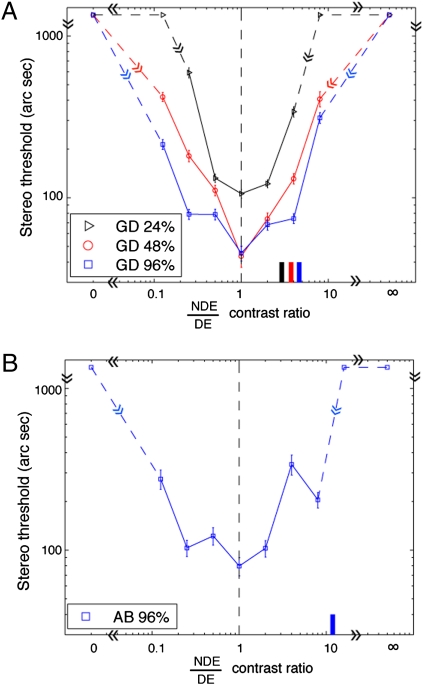Fig. 4.
Results for PDT at different interocular contrast ratios when the spatial frequency was 0.68 cpd and the base contrast (the higher contrast in two eyes) was 96% (blue), 48% (red), or 24% (black). (A) Results for observer GD. (B) Results for observer AB. For each base contrast, when the NDE/DE contrast ratio was <1, the DE's contrast remained constant at the base contrast, and the contrast ratio was increased by increasing the NDE's contrast. When the NDE/DE contrast ratio was >1, the NDE's contrast remained constant at the base contrast, and the contrast ratio was increased by decreasing the DE's contrast. Marks without an error bar at the top of the panel indicate that no depth could be detected under these conditions. An NDE/DE contrast ratio at 0 or ∞ represents a monocular control condition (only one eye was presented with stimuli). A short colored bar along the abscissa indicates the NDE/DE contrast ratio at which both eyes perceived stimuli equally. Error bar: 1 SE.

